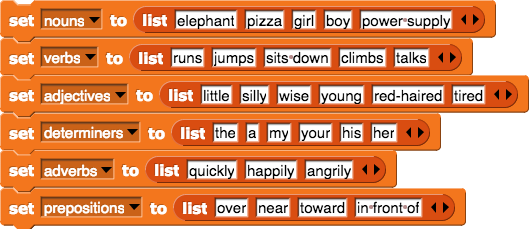Lesson 2.05: Lists
Learning Objectives
Students will be able to...
- Define and identify: list, item, index, integer
- Be able to access items from a list using the index
- Create lists of different types
- Use the length function
Materials/Preparation
- Do Now
- Lab
- Associated Reading - section 2.4 of Book
- Read through the do now, lesson, and lab so that you are familiar with the requirements and can assist students
Pacing Guide
| Duration | Description |
|---|---|
| 5 Minutes | Do Now |
| 10 Minutes | Lesson |
| 35 Minutes | Lab |
| 5 Minutes | Debrief |
Instructor's Notes
- Do Now
- Students follow instructions to create lists and use the
lenfunction.
- Students follow instructions to create lists and use the
Lesson
Ask students to recall what a list is, and how lists were used in Snap!
- A list is a sequence of values. In a list, they can be any type. The values in a list are called elements or items.
- In Python, to create a list you must enclose items in square brackets.
- Emphasize that you can have lists of any type (int, float, string, etc). You can even have lists within lists (more on that later...)
- Remind students of lists in Snap!

- Ask students what
lendoes when they used it in the Do Now. - Ask students how they tried to print the first item from a list. Was this what they were expecting?
- index: a map from the position in the list to the element stored there.
- 0-index: lists are 0 indexed. So the first element in the list is at the 0-index
- Out-of-bounds: what happened when you tried to index into a list that was too long?
- Snap Equivalent:

- Ask students how they would access the last item in a list of unknown length. (Use the length function!)
- Ask students to write on the board how they got the last element of a list. Ask another student to write how they would get the second to last element of the list and so on.
- After accessing any list element you can change it. Take a moment to demonstrate this syntax before starting the lab.
- Lab
- Practice accessing and updating items in a list
- Implement program from last lab using lists
- Create a quiz program
- Debrief
- Check student progress and completion of the lab, wrap up by taking any final questions.
Accommodation/Differentiation
If students are moving quickly, you can introduce the topic of nested lists. Start off with a simple nested list like ['a', 'b', 'c', [1, 2, 3]]. Ask the students to guess the length. Ask the students to guess how they would access the item '1' from that list!